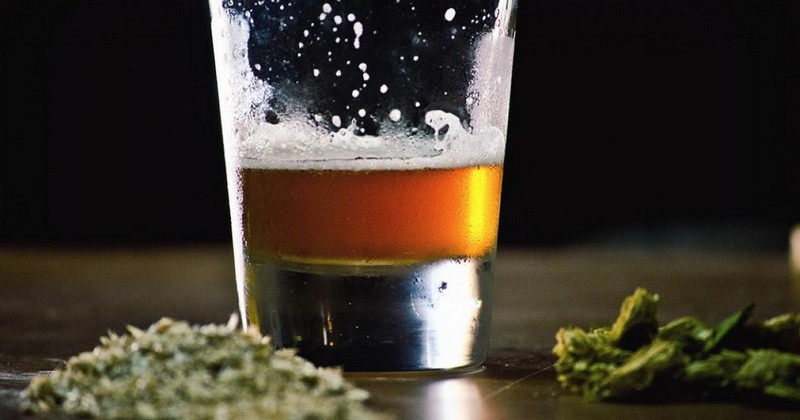Combining alcohol and marijuana has these effects on the brain.

These two commonly used substances can have very harmful effects if consumed together.
Alcohol and cannabis are two of the most widely consumed psychoactive substances in the world, if one excludes some less intoxicating ones such as caffeine and theine. Since the initial effects of these two drugs are associated with physical and psychological relaxation, it is common for many people to take them simultaneously to facilitate a synergy.
In this article we will see how the combination of alcohol and marijuana affects the brain, as well as the potential risks of this combination.as well as the potential risks of this practice. For this it is necessary that we first stop to analyze the effects of each of these substances separately.
How does alcohol affect the brain?
Alcohol exerts depressant effects on the central nervous system.This broadly means that it inhibits its activity. However, if the dose consumed is low, alcohol causes a reduction in behavioral inhibition (which many people associate with increased sociability) and feelings of relaxation and emotional release.
When the dose is high, signs appear such as deficits in working memory and other executive functions, motor coordination problems -including expressive language-, blurred vision and emotional disturbances, such as decreased control over anger. Severe intoxication can lead to ethyl coma and even death..
Five phases of alcohol intoxication have been described according to the Blood concentration of this compound: the euphoria phase (characterized by impulsivity), the intoxication phase (which causes incoordination), the confusion phase (in which drowsiness and dysarthria appear), the stupor and coma phase and, finally, the bulbar phase or death due to cardiorespiratory arrest.
Effects of cannabis use
In general marijuana produces relaxing effects on the body. However, the reactions derived from the consumption of this drug can vary depending on different variables, among which the dose used, the characteristics of the person's organism and the variety used stand out. The indica tends to be more interfering than the sativa.
The main active component of cannabis is cannabinoids, compounds found in some plants that activate specific receptors in the human body: cannabinoid receptors. The most important is tetrahydrocannabinol or THC, which accounts for the effects of effects of relaxation, perceptual distortion, fatigue and increased appetite..
By binding to cannabinoid receptors, THC alters the body's dopamine and norepinephrine levels; this causes a sense of well-being, promotes introspection and increases sensory awareness, but also negatively affects cognitive performance. negatively affects cognitive performance and can cause acute anxiety, even anxiety attacks.even anxiety attacks.
The combination of alcohol and marijuana
Given that both marijuana and alcohol intoxication decrease cognitive and behavioral performance (including prominently impaired working memory), it is not surprising that when taking both substances these effects are greater than if only one is used.
In particular research such as that of Hartman's team (2015) suggests that, when these two drugs are combined, alcohol enhances the effects of marijuana since it increases the concentration of THC in the blood, and this is the main psychoactive component of cannabis.
In contrast, according to a study by Lukas' group (2015), consuming marijuana alters gastrointestinal motility; this causes alcohol to be absorbed to a greater extent by the body, leading to a decrease in the effects of alcohol.
It is important to keep in mind that people who are in a situation of physical and/or psychological dependence on one of these substances run a high risk of developing poly-drug addiction if they start to combine it with another substance. a high risk of developing poly-drug addiction if they start to combine it with the other substance, since they have synergistic effects and can act as mutual substitutes.The use of a substance in combination with another substance can lead to poly-drug addiction, since they exert synergistic effects and can act as mutual substitutes.
Physiological and psychological effects of this mixture.
Consuming alcohol first and then marijuana increases the concentration of THC because alcohol facilitates its absorption in the digestive tract. Although there are people who practice this combination recreationally, it can cause unpleasant physical and cognitive reactions, especially if the amount of alcohol is excessive.
In particular, many people report signs such as pallor, feelings of dizziness and weakness, nausea and vomiting. In addition, the mixture of these two substances increases the likelihood of psychological symptoms, mainly anxiety (sometimes even resulting in anxiety attacks) and paranoid thoughts.
The combined use of alcohol and cannabis is one of the most common causes of traffic accidents worldwide. accidents worldwide. This is because mixing the two substances significantly impairs the ability to concentrate and to react quickly, two very important driving skills.
(Updated at Apr 13 / 2024)